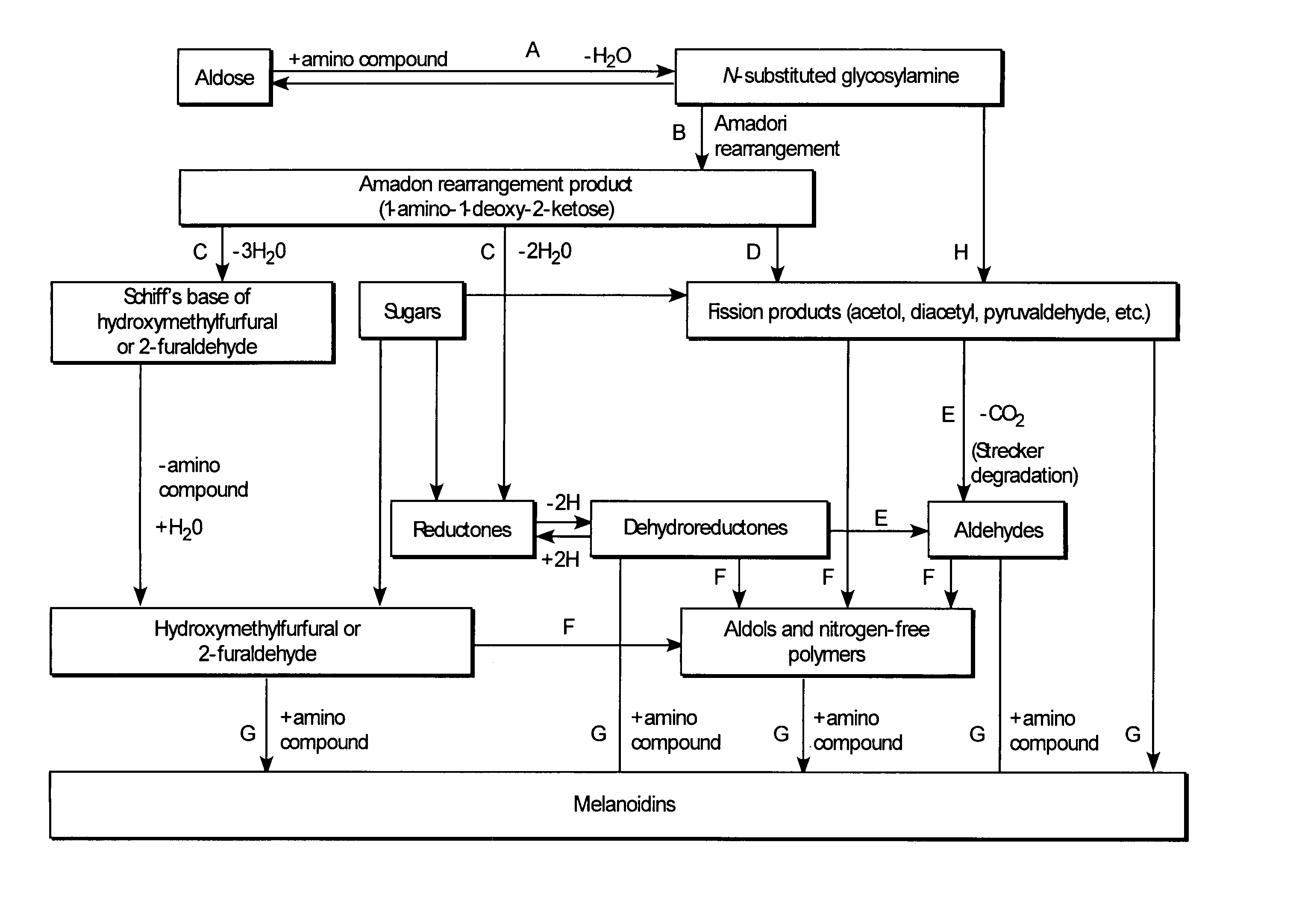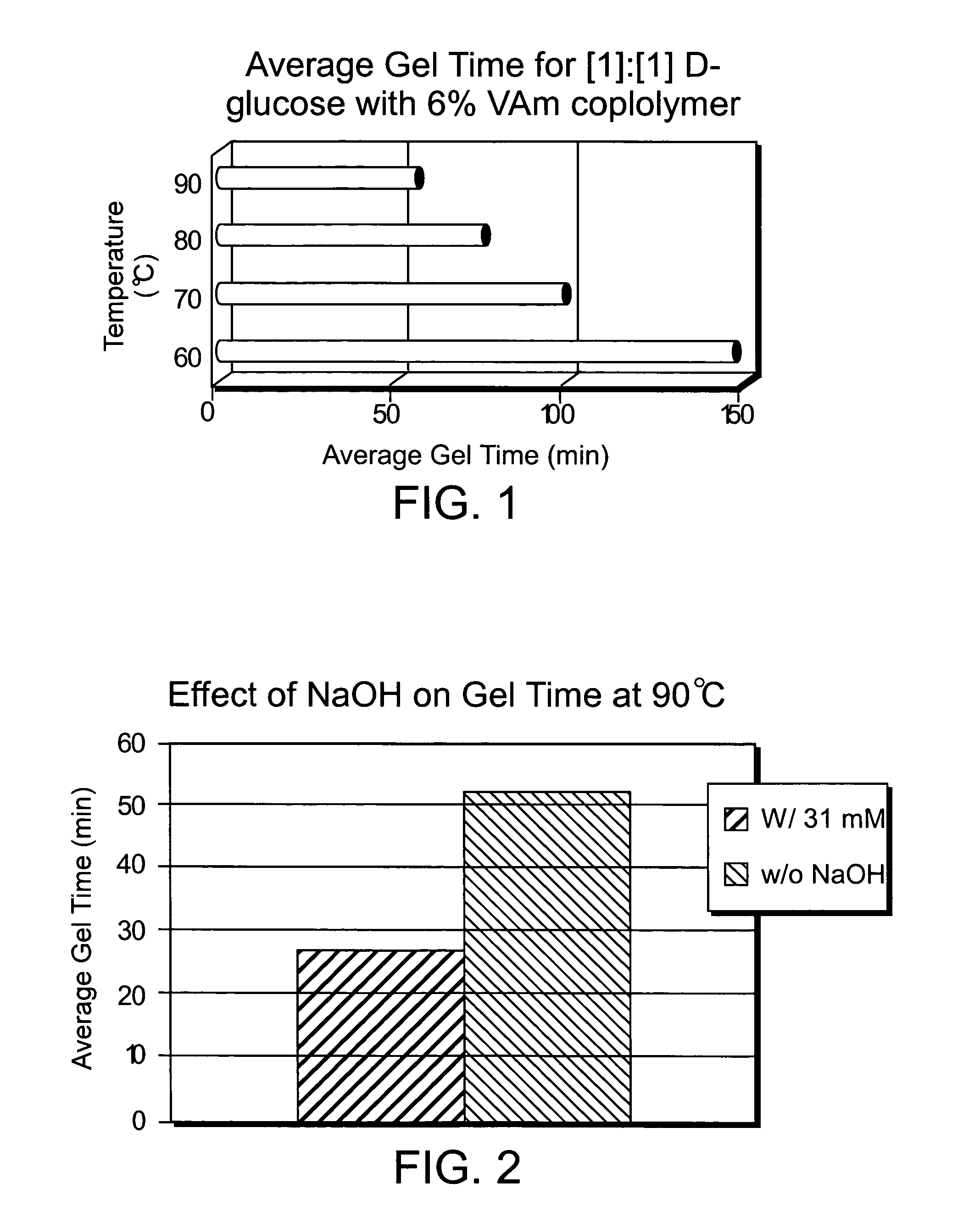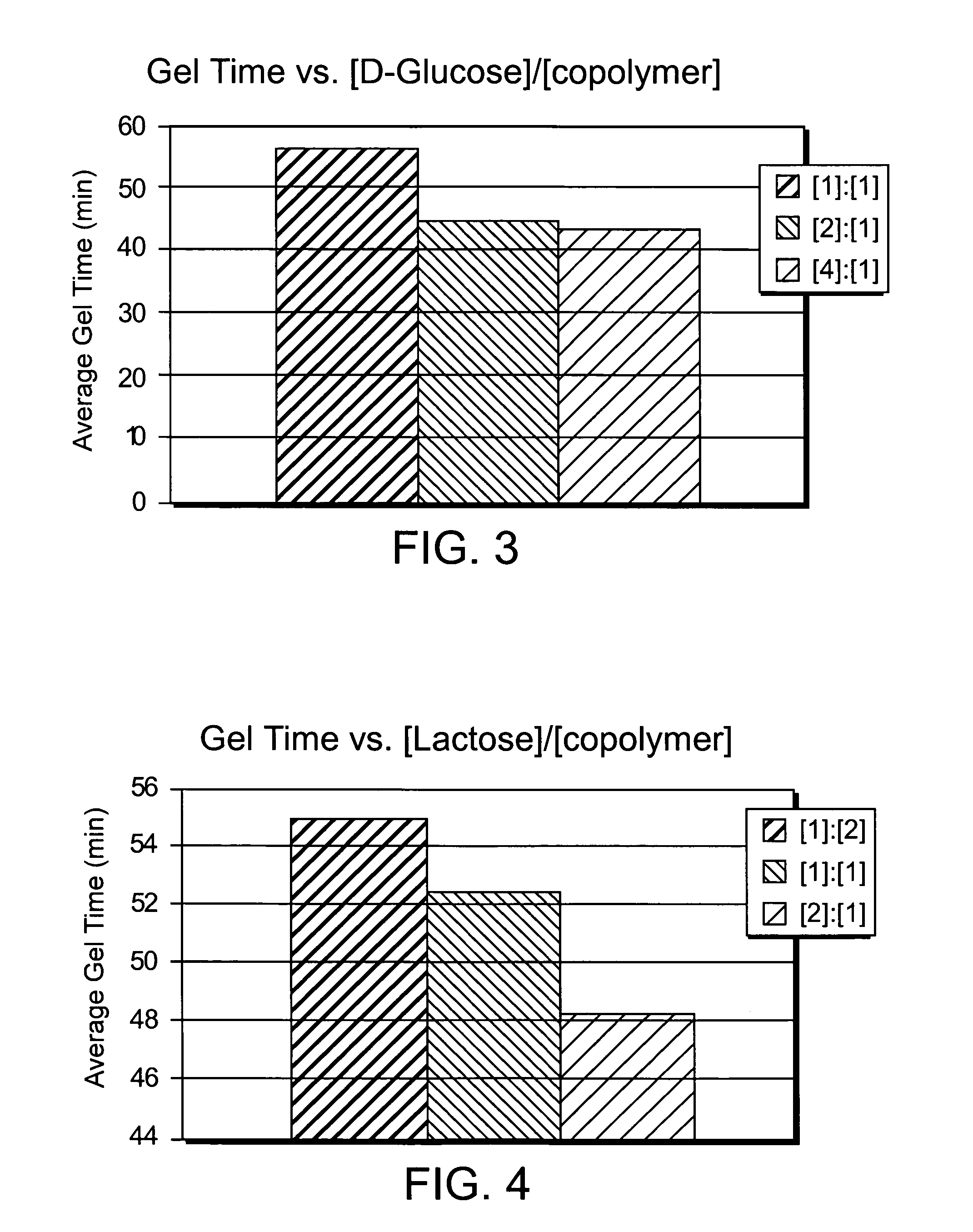Composition for increasing cellulosic product strength and method of increasing cellulosic product strength
a cellulosic product and cellulosic product technology, applied in special paper, textiles and paper, after-treatment, etc., can solve the problem that pre-formed hydrogels cannot effectively bind to cellulosic fibers, and achieve the effect of increasing the wet and dry strength of paper and other cellulosic products
- Summary
- Abstract
- Description
- Claims
- Application Information
AI Technical Summary
Benefits of technology
Problems solved by technology
Method used
Image
Examples
example 1
[0050]An aqueous solution was prepared by dissolving 7.5 g D-glucose and 2.5 g poly(vinylalcohol) (PVOH) into distilled, deionized water in a 25 mL volumetric flask. The solution was clear with some undissolved polymer. It was, however, pourable. The solution was transferred to a round bottom flask and heated to 80° C. in an oil bath. Heating was done with constant stirring and under reflux conditions. Upon completion the solution remained clear with all polymer dissolved and was still pourable.
example 2
[0051]Prior studies suggest that an aqueous solution of PVOH and D-glucose could be used to form hydrogels by using freezing / thawing cycles. See Yamaura, K.; Fukada, M.; Tanaka, T.; Tanigami, T. J. of Applied Polymer Science. 1999, 74, 1298-1303. To study this effect, a solution was prepared as in example 1. Heating was carried out using the same procedure as in example 1, but was allowed to reach a temperature of 90° C. The aqueous solution was then placed in a −10° C. freezer over 48 hours. After thawing the solution at room temperature for 1 hour a weak, white hydrogel had formed. The gel was then placed back in the freezer for 24 hours and then thawed at room temperature for 1 hour. After which, the gel appeared visibly stronger. This gel was found to be soluble in water heated up to 49° C. Neither swelling nor dissolution was noted when placed in 1M HCl.
example 3
[0052]Prior studies further suggest that D-glucose was not necessary for the gelation of poly(vinylalcohol) using the process in example 2. See Yamaura, K.; Karasawa, K. I.; Tanigami, T.; Matsuzawa, S. J. of Applied Polymer Science. 1994, 51, 2041-2046. To study such gelation, a 2.5 g of PVOH was dissolved in distilled, deionized water in a 25 mL volumetric flask. Heating was carried out using the same procedure as in example 1, but was allowed to reach a temperature of 95° C. The solution was then placed in the freezer at −25° C. for 48 hours. After 1 hour of thawing at room temperature a gel, similar in appearance to the gel in Example 2, was produced. The inability of PVOH to form hydrogels without the freezing / thawing cycle indicated that the amine groups on copolymers of PVOH and Poly(vinylamine) in the compositions of the present invention are responsible for gelation.
PUM
| Property | Measurement | Unit |
|---|---|---|
| temperature | aaaaa | aaaaa |
| temperature | aaaaa | aaaaa |
| temperature | aaaaa | aaaaa |
Abstract
Description
Claims
Application Information
 Login to View More
Login to View More - R&D
- Intellectual Property
- Life Sciences
- Materials
- Tech Scout
- Unparalleled Data Quality
- Higher Quality Content
- 60% Fewer Hallucinations
Browse by: Latest US Patents, China's latest patents, Technical Efficacy Thesaurus, Application Domain, Technology Topic, Popular Technical Reports.
© 2025 PatSnap. All rights reserved.Legal|Privacy policy|Modern Slavery Act Transparency Statement|Sitemap|About US| Contact US: help@patsnap.com



